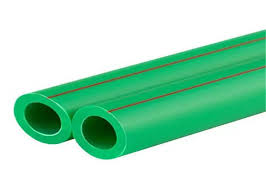Oct . 17, 2024 05:27 Back to list
china pipe hdpe size
Understanding HDPE Pipe Sizes A Comprehensive Guide
High-Density Polyethylene (HDPE) pipes have gained immense popularity in various industries due to their durability, flexibility, and resistance to corrosion. Whether for water distribution, drainage, or gas transportation, the right size and specification of HDPE pipes are crucial for the efficiency and longevity of projects. In this article, we will delve into the specifics of HDPE pipe sizes and their applications.
HDPE pipes are available in various sizes, which typically range from 16 mm to 1200 mm in diameter. The sizing of these pipes is determined according to various parameters such as the intended application, flow requirements, and pressure ratings. The two common measurement systems for HDPE pipes are the nominal pipe size (NPS) and the outside diameter (OD).
Understanding HDPE Pipe Sizes A Comprehensive Guide
2. Applications of Different Sizes Smaller diameter pipes (16 mm to 50 mm) are commonly used in residential plumbing projects, irrigation systems, and small-scale industrial applications. They are ideal for low-pressure water distribution. Medium-sized pipes (63 mm to 160 mm) find their place in urban water supply systems, sewage, and drainage systems. Larger diameter pipes (200 mm and above) are frequently used for industrial applications, large-scale irrigation, and main sewer lines, where they can handle significant pressures and flow rates.
china pipe hdpe size

3. Flexibility and Installation One of the key advantages of HDPE pipes is their flexibility, which allows for easy handling and installation in various environments. Their lightweight nature simplifies transportation and reduces labor costs during installation. Moreover, HDPE pipes can be fused together, creating a joint that is nearly as strong as the pipe itself, which contributes to a leak-free system.
4. Resistant to Corrosion and Chemicals HDPE pipes' resistance to corrosion and a wide range of chemicals makes them suitable for various applications beyond water transport. Industries dealing with chemicals, wastewater, or corrosive substances increasingly opt for HDPE due to its longevity and reliability.
5. Environmental Considerations In today's world, sustainability is a growing concern. HDPE pipes are recyclable, which means they can be reprocessed into new products at the end of their lifecycle, reducing environmental impact.
In conclusion, understanding HDPE pipe sizes and their applications is essential for engineers, contractors, and project managers. Utilizing the correct size of HDPE pipe can significantly affect the efficiency, cost, and durability of any piping system. With ongoing advancements in technology and increased awareness of environmental issues, the demand for HDPE pipes is likely to continue growing across various sectors globally. As a result, it remains imperative for stakeholders to stay informed about the specifications and innovations surrounding HDPE piping solutions.
-
High-Quality PVC Borehole Pipes Durable & Versatile Pipe Solutions
NewsJul.08,2025
-
High-Quality PVC Perforated Pipes for Efficient Drainage Leading Manufacturers & Factories
NewsJul.08,2025
-
High-Quality PVC Borehole Pipes Durable Pipe Solutions by Leading Manufacturer
NewsJul.08,2025
-
High-Quality PVC Borehole Pipes Reliable PVC Pipe Manufacturer Solutions
NewsJul.07,2025
-
High-Quality UPVC Drain Pipes Durable HDPE & Drain Pipe Solutions
NewsJul.07,2025
-
High-Quality Conduit Pipes & HDPE Conduit Fittings Manufacturer Reliable Factory Supply
NewsJul.06,2025

